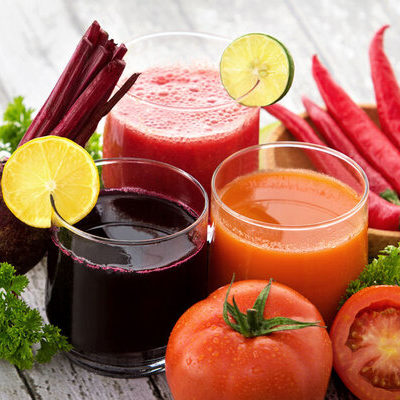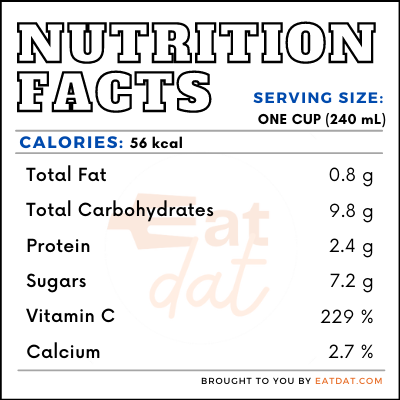
Vegetable Juice
What is Vegetable Juice?
Vegetable juice is a juice made by blending vegetables or a mix of vegetables into a puree, which is sometimes strained. It may also be made by extracting the juice from vegetables. Vegetable juice is often made with a blend of different vegetables to enhance its flavor. Sometimes, these are also blended with fruit juice to bring some sweetness to the drink.
- Vegetable juices may be consumed cold or at room temperature.
- To jazz up the juice, spices like ginger and garlic, or fruits like lemon, may also be added.
The vegetables that are most often consumed as juice are:
- Kale
- Carrot
- Beetroot
- Cabbage
- Spinach
- Broccoli
- Parsley
- Cucumber
- Swiss Chard
- Wheatgrass
- Celery
- Tomato
Origin of vegetable juice
The first juice was made by boiling herbs in water. Around 1,300 AD, we know different languages had words for juice, often referring to herbal water, broth, and soup. Even earlier than that, the Dead Sea Scrolls refer to the mashing of pomegranates and figs to obtain their juice around 150 BC. The first vegetable juice likely came from Norman W. Walker, who noticed how wet carrots were when peeled, and ran a few through a feed grinder, creating the first carrot juice. Today, juicing technology is well developed, and juicing is more popular than ever.
Nutrition
The nutritional value for one cup of vegetable juice:

*Percentages are based on a diet of 2000 calories a day.
Vegetable juices are rich in polyphenols, vitamins, and minerals. Regular consumption of vegetable juices can result in lower cardiovascular diseases, maintenance of blood sugar, and blood lipid profiles. These juices are low in sugar, which makes them ideal for diabetes patients. Vegetable juices are also alkaline in nature and balance the pH of the body.
Blending instead of juicing vegetables to make vegetable juice can add more fiber to the diet and can lead to satiation. However, juicing results in quicker absorption of the nutrients. Fermented vegetable juices promote the development of probiotic bacteria, which helps in boosting the immune system.
Commercial production
Vegetables are first harvested and selected, then washed and cleaned thoroughly to prepare commercial vegetable juice. In some cases, the vegetables are cooked in order to better release their flavors in the juice. The vegetables are then pressed, and juice is extracted. Then, filtering and pasteurization are undertaken to get rid of the bacteria. Finally, the juice is either packaged or goes onto further processing to condense it into concentrates.
Vegetable juice recipes
This juice can be made in several different ways. They can be consumed as is, or they can be used to give flavor to other dishes. Here are a few vegetable juice recipes:
- Green Juice
- Beet Poached Salmon
- Pineapple and Green Capsicum Juice
- Tomato Vegetable Juice
- Carrot Juice
- Beetroot Ginger Juice
FDA regulations
The FDA defines juice as any aqueous liquid expressed or extracted from fruits or vegetables, or purees of the edible portions of the same. Juice can also cover the concentrates of fruits or vegetables. Juices are strictly monitored by the FDA for safety and to minimize microbial food safety hazards. Companies are required to specify the exact amount of juice present in the product.
References
Zheng, Jie et al. “Effects and Mechanisms of Fruit and Vegetable Juices on Cardiovascular Diseases.” International journal of molecular sciences vol. 18,3 555. 4 Mar. 2017, doi:10.3390/ijms18030555, https://www.ncbi.nlm.nih.gov/pmc/articles/PMC5372571/
M.H. Saarela, Probiotic functional foods, Functional Foods (Second Edition), 2011, https://www.sciencedirect.com/topics/food-science/vegetable-juice
